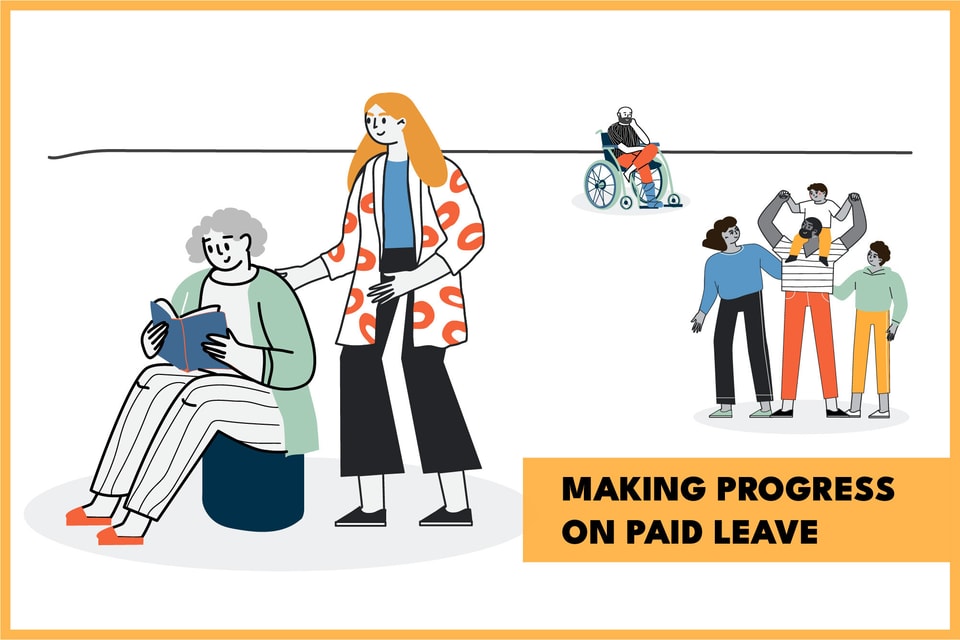One-Pager Published April 25, 2023 · 3 minute read
Making Progress on Paid Leave
Curran McSwigan & Zach Moller

Thirty years after the passage of the Family and Medical Leave Act, America is stuck.
- Just half of all workers have an unpaid leave benefit.
- Paid leave is a privilege that accrues mostly to college-educated workers in office jobs.
- One-in-four new moms return to work within just two weeks of giving birth.
- The average American father takes off just one week after the birth or adoption of a child.
And yet, even though comprehensive paid leave legislation remains stalled in our divided government, we believe there are paths to making much-needed progress on paid leave. Numerous policies can be pursued today that lay the foundation to building a more comprehensive system tomorrow.
Below are a series of resources for policymakers looking to expand paid leave.
Guide: Ten Questions for a New Paid Leave Plan
A guide for policymakers on how to construct a paid leave program. It includes:
- 10 decisions policymakers need to make when constructing a paid leave program.
- Information about existing paid leave programs among employers, states, and the federal government.
- A summary of federal legislative proposals out there on both sides of the aisle.
Policy: 12 Ideas to Jumpstart Progress on Paid Leave
A menu of federal policy options to make much needed progress today while serving as building blocks for a more comprehensive program in the future. Ideas include:
Parental Leave Progress
- Expand unpaid parental leave to cover all workers.
- Create a national parental-only paid leave program.
- Build in more short-term and long-term flexibility to help parents return and stay in the workforce.
Medical Leave Progress
- Invest in better medical leave data.
- Ensure more workers have basic unpaid medical leave protections and businesses can better accommodate leave.
- Make sure all workers have at least 7 days of paid sick leave.
- Leverage markets for short-term disability insurance.
Caregiving Leave Progress
- Invest in better caregiving data.
- Ensure more workers have basic unpaid caregiving leave protections and broaden the definition of caregiving.
- Make a refundable tax credit for lost wages from caregiving.
- Enact a flexible caregiving leave benefit.
- Create a standardized form for employees to request flexible work arrangements.
Data: Not There Yet: Rising Access to Paid Family Leave Masks Disparities
New data from the Bureau of Labor Statistics shows the share of workers with paid family leave has more than doubled over the last 12 years. But today, only one-in-four workers have a paid family leave benefit through their employers.

